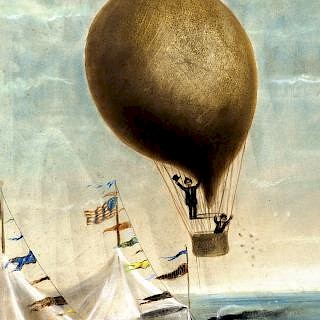Set of Transatlantic Cables Presented to General Thomas Eckert by Siemens Brothers, London, 1866
About Seller
6270 Este Ave.
Cincinnati , OH 45232
United States
With offices in Cincinnati, Cleveland and Denver, Cowan’s holds over 40 auctions each year, with annual sales exceeding $16M. We reach buyers around the globe, and take pride in our reputation for integrity, customer service and great results. A full-service house, Cowan’s Auctions specializes in Am...Read more
Two ways to bid:
- Leave a max absentee bid and the platform will bid on your behalf up to your maximum bid during the live auction.
- Bid live during the auction and your bids will be submitted real-time to the auctioneer.
Bid Increments
| Price | Bid Increment |
|---|---|
| $0 | $25 |
| $500 | $50 |
| $1,000 | $100 |
| $2,000 | $250 |
| $5,000 | $500 |
| $10,000 | $1,000 |
| $20,000 | $2,500 |
| $50,000 | $5,000 |
| $100,000 | $10,000 |
About Auction
Jun 13, 2014 - Jun 14, 2014
Cowan's Auctions dawnie@cowans.com
- Lot Description
Fine presentation set in a box affixed with an engraved plate reading Types of American Atlantic Cables / Presented By Siemens Brothers & Co. / To General Thomas Eckert. A latch integrated into the plate unlocks the cover, allowing access to seven 9 in. long sections, 1.25 to 2.625 in. in diameter, with sterling silver rings at either end, engraved Siemen Bros. & Co. / London at the top and No. 1 through No. 7 at the bottom (with British hallmarks), and seven cross sections. Box is 18 x 20.25 x 6 in. high overall.
Thomas Eckert (1825-1910) had a childhood fascination with telegraphy, which led him to move from Ohio to New York to sign on as an operator with the Morse Telegraph Company in 1847. He returned to Ohio to become postmaster at Wooster and synthesized the two jobs by installing a telegraph line in the post office. In 1852, he was appointed by J.H. Wade of the Wade Telegraph Company to supervise the construction of a line between Pittsburgh and Chicago, which became part of the Union Telegraph Co.
While working in North Carolina in 1861, Eckert was accused of being a Northern spy, but escaped back to Ohio and immediately offered his services to the Union cause. Though he lacked any military experience, his expertise made him an invaluable asset to the army and he was appointed a captain and aide-de-camp in charge of military telegraph operations to General McClellan, then serving as general-in-chief of the Union Army. Capt. Eckert accompanied McClellan during the Peninsula Campaign of 1862, but soon after was recalled to Washington to supervise the military telegraph network for the entire War Department, for which he was highly praised by Secretary of War Edwin Stanton and President Lincoln, who promoted him to the rank of brevet brigadier and Assistant Secretary of War by the end of the war.
Eckert resigned his government post in 1866 to take a job as the manager of the eastern division of Western Union, and one of his first responsibilities was overseeing the construction of lines to connect with the first viable transatlantic cables. Siemen's Brothers had manufactured the cables and they were laid by I.K. Brunel's converted SS Great Eastern. The main length of the cable, Ireland to Newfoundland, broke just 600 miles from the North American shore, but the second was connected successfully on July 27, 1866, to international celebration. The operation had been so costly and the demand to send message so high that the price of transmitting a message in the first months was $5 per word (over $75 in 2013 dollars), but the money could not have started rolling in had Eckert not been able to construct and manage the eastern connection, which would explain why Siemens honored him with the fine presentation piece offered here.
Eckert would go on to manage a series of important telegraph networks for Western Union and its main competitors, culminating in being appointed president of Western Union from 1893 to 1900 and chairman of the board from 1900 until his death in 1910. - Shipping Info
-
SHIPPING. At the request of the buyer, Cowan's will authorize the shipment of purchased items. Shipments usually occur within two weeks after payment has been received. Shipment is generally made via UPS Ground service. Unless buyer gives special instructions, the shipping method shall be at the sole discretion of Cowan's Auctions, Inc.. Cowan's is in no way responsible for the acts or omissions of independent handlers, packers or shippers of purchased items or for any loss, damage or delay from the packing or shipping of any property.
-
- Buyer's Premium



 EUR
EUR CAD
CAD AUD
AUD GBP
GBP MXN
MXN HKD
HKD CNY
CNY MYR
MYR SEK
SEK SGD
SGD CHF
CHF THB
THB





